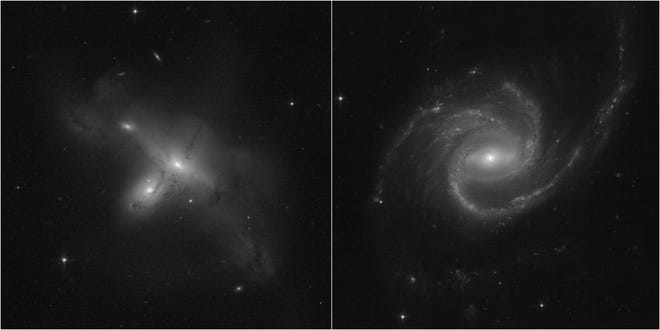The Hubble Space Telescope has returned to operational status after a nearly monthlong mysterious glitch put NASA scientists in a frenzy.
In a statement Saturday, NASA said engineers successfully switched the spacecraft to backup hardware, a process that started July 15 after a computer anomaly occurred June 13.
“I’m thrilled to see that Hubble has its eye back on the universe, once again capturing the kind of images that have intrigued and inspired us for decades,” NASA Administrator Bill Nelson said in a statement.
The telescope's first images after the debacle include a pair of colliding galaxies and a galaxy with unusual extended arms. According to NASA, most disk galaxies have an even number of spiral arms, but this one has three.

The telescope will observe globular star clusters and aurorae on the giant planet Jupiter. NASA has not released pictures.
On June 13, a 1980s-era payload computer, which is supposed to control and coordinate scientific instruments aboard the Hubble and monitor them for health and safety purposes, stopped working.
"After the halt occurred ... the main computer stopped receiving a ‘keep-alive’ signal, which is a standard handshake between the payload and main spacecraft computers to indicate all is well," NASA said in the statement.
At first, the team thought the problem was a degrading memory module, but attempts to switch to a backup memory module failed.
The team moved its attention to other pieces of hardware that could have caused the payload computer to shut down, but the culprit is still unclear. Jim Jeletic, Hubble deputy project manager at Goddard Space Flight Center, told USA TODAY that operators suspect the telescope's Power Control Unit (PCU), which is designed to provide a steady voltage supply to the payload computer’s hardware.
"We can't completely prove it, unless you bring the computer back to the ground and we look at all the parts, but we suspect that either the voltage regulator was at fault for providing electricity that was a little out of range or the protective circuit was at fault," Jeletic said.
The switch to the backup hardware took 15 hours to complete, according to Jeletic, and on July 16, the team started recovering all the instruments to operational status that were in safe-mode configuration.
"We are back to doing normal science operations," Jeletic said.




No comments:
Post a Comment